Upgrading the Flat TCC Pistons for the 4L30-E & 4T65-E
The 4T65-E and 4L30-E share a number of issues related to the torque-converter clutch (TCC). Both transmissions are notorious for their TCC-application and shudder problems. A root-cause analysis of each application yielded similar results.
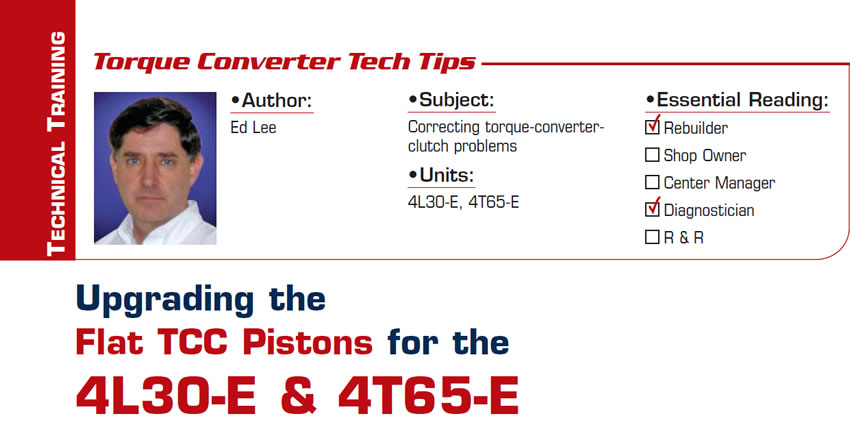
Don’t Blow Your Fuse
The vehicle involved was a 1998 Honda Passport 4WD with a 3.2-liter V-6 and 4L30-E transmission. The shift indicator in the cluster was not functioning properly, and the transmission was shifting hard. The indicator showed P in Park and 1 in D3, D2 and D1, and it didn’t light up any other time. This seemed to be pretty straightforward, since the mode switch (range sensor) has a high failure rate.
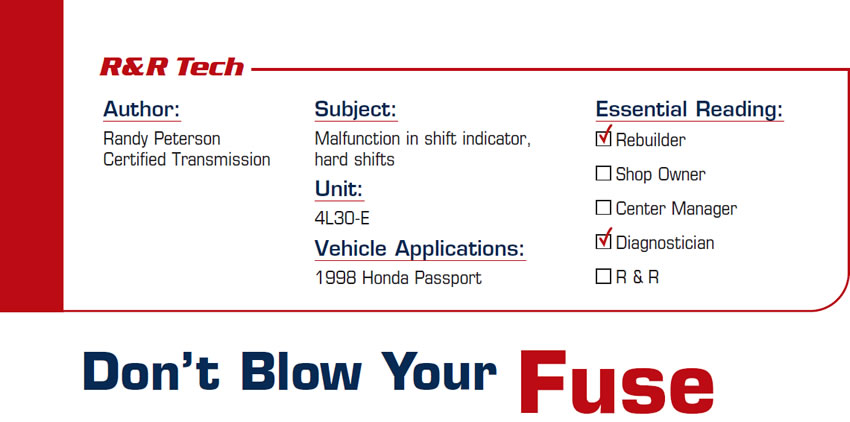
Out of Sight, Out of Mind; What a Waste of Time
In the world of transmission diagnostics, from time to time there is a scenario in which the diagnostics performed ends up being a waste of time. In some situations it can be partially attributed to the “out of sight, out of mind” syndrome, as is the case with a 4L30-E transmission in Isuzu Trooper and Rodeo vehicles. The problem occurs mostly after the transmission has been re-installed.
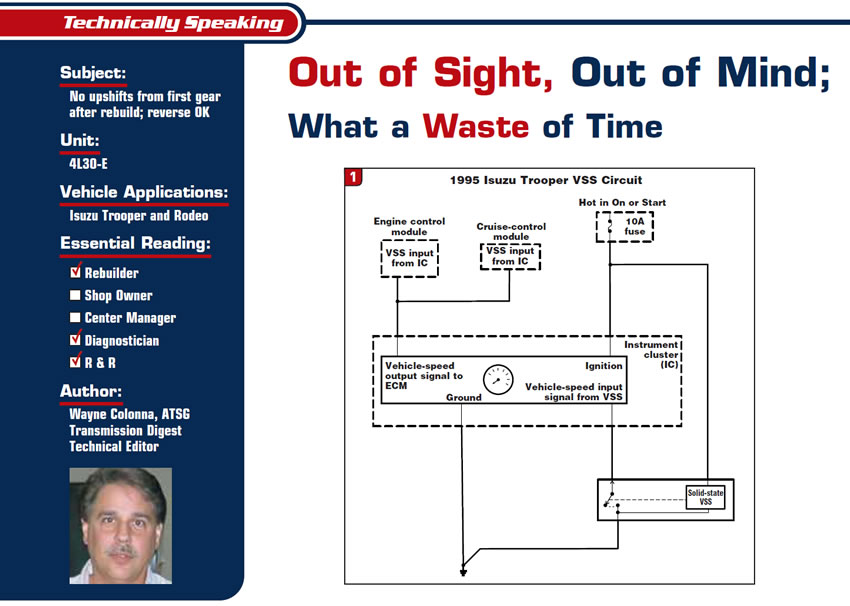
Keep Your Eye on the Ground
How many times did we hear those words when we stumbled? Sometimes this can also be good advice when you’re working on electronic control devices like the TCM.

Fluid Change Can Cost Big Change ($)
Some of us may remember how in the days of old a C-6 transmission would leave a beautiful filter footprint in the bottom pan. This resulted from the filter opening being too close to the pan. When the pump started sucking, it would pull the pan right up to the filter, and as it vibrated away the filter etched itself into the pan. Of course, that starved the pump and caused premature failure of the transmission.
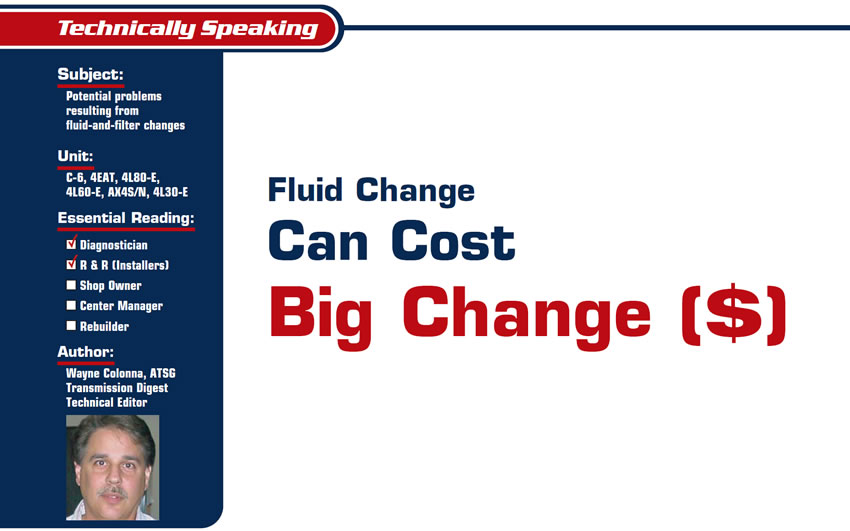
The Trooper Blues
The description for code 37 says this “serial line” is the wire that is connected from the transmission control module to the engine control module and the diagnostic connector. This wire is used for torque management. How it works: The TCM delivers a spark-advance signal to the ECM during each shift, through this serial line, to reduce engagement shock. Any interruptions, shorts or opens on this line will set a code 37.

4L30-E: Slips in 2nd or Slips in 3rd
A 1995 BMW 325i equipped with a 4L30-E transmission came into a transmission shop. The customer was referred to the transmission shop by a technician at a general service facility because of a “check transmission” light and the torque-converter-slip code that he found during his inspection.

Simply Complicated
It is in these two vehicles (Tracker and Sidekick) that we find a TCC system distinct from that used in any of the earlier TCC-equipped designs. Figures 1 and 2 show the internal adaptation and description of the components used to control converter-clutch apply. There we see that a TCC solenoid is fitted with some plumbing. The bottom pipe coming from the valve body is band-release pressure, otherwise known as 3rd-gear oil. This ensures that the vehicle will never have TCC until 3rd gear. When the solenoid is energized, this oil is routed through the upper pipe to the pump cover (see figures 3 and 4), where it strokes the converter-clutch control valve into a lockup position.
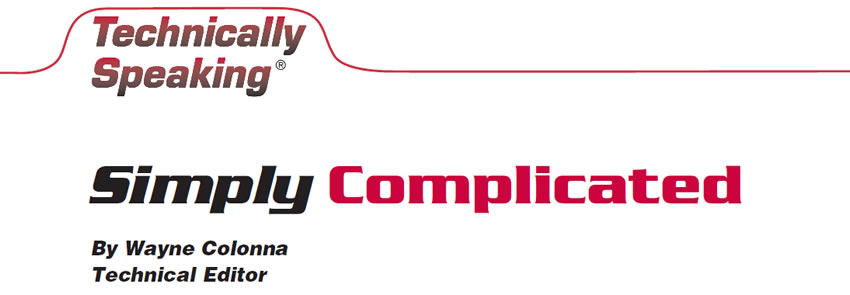
Part II – More 4L30 E Problems (Lots More)
Problems and Fixes for the 4L30 E transmission.

4L30-Es May Drive You Crazy – Part I
If any part of your sanity were ever in question, the 4L30 E transmission might be just the thing to put you over the edge. The most-common complaints concerning the 4L30 E usually have something to do with reverse. No reverse, little or no reverse, neutraling in reverse and partial TCC-lockup apply in reverse are only a few of the many problems.

